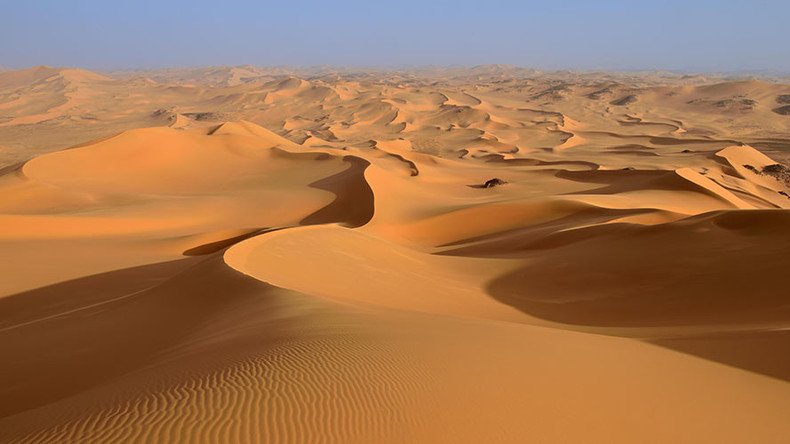Human-induced disaster? ‘If Sahara had vegetation there would be fewer hurricanes’

If the Sahara had vegetation today, there would be fewer hurricanes claims Professor David Wright of Seoul International University. Eight thousands of years ago it had lush plant life and animals which were lost due to environmental and social changes.
Many experts claim the environment of the Sahara Desert influences the formation of hurricanes, and if there were more vegetation in that region, there might be fewer hurricanes hitting the east coast of the US.
RT America's Anya Parampil discussed these and other issues with Professor David Wright from Seoul International University
RT: Can you explain what was the African Humid Period?
David Wright: The African Humid Period is a time when the Earth's orbit was aligned as such that the southern middle latitudes of the Earth received a lot of sunlight. That sunlight caused the conditions to be warmer than they are today, for example. That encouraged the growth of vegetation across the southern middle latitudes of the Earth. And that vegetation created a feedback mechanism, whereby there was more rainfall falling over the Sahara than there is today.
RT: So the Sahara that exists today is very different from the region which existed thousands of years ago, isn’t it?
DW: The Sahara of the past and during the African Humid Period was completely un-analogous to anything that we have on Earth today. That also included even tropical plants and savanna-type vegetation. The Sahara as it existed between say 10,000 -8,000 years ago had extremely diverse geographies, a lot of lakes and a lot of different animals living in it that we associate with grassland environments.
RT: When and why did that change?
DW: It started to change a little bit longer than 8,000 years ago, and that was primarily due to natural changes in the Earth’s orbit, where the Earth started to kind of wobble away from the Sun a little bit. The thing that I argue that is a little un-orthodox is what I did in the paper I wrote for Frontiers in Earth Science. I lined up all of the events where drying occurred extremely rapidly, or vegetation change occurred very rapidly. At least in my opinion more rapid than what you would see with natural cycles.
I also plotted when and where domesticated animals first appeared. What you see if you line the data up is that when and where domesticated animals first appear, after domestication began around 8,000 years ago, or 7,000 years ago, and then spread outwards from northern Africa into southern and western Africa. If you plot all of those data points up, what you see is a really rapid transition from a very diverse eco system full of varied types of plants and animals to one that becomes dominated by shrubs and becomes dryer much faster than which you would predict if it was just a natural climate cycle.
RT: According to the NOAA (National Oceanic and Atmospheric Administration,): “The role the Sahara Desert plays in hurricane development is related to the easterly winds (coming from the east) generated from the differences between the hot, dry desert in north Africa and the cooler, wetter, and forested coastal environment directly south and surrounding the Gulf of Guinea in West Africa. The result is a strong area of high altitude winds commonly called the African Easterly Jet. If these winds were constant, we would also experience fewer hurricanes.” What are your thought about that?
DW: I think if there was more vegetation in the Sahara, it is likely there would be fewer hurricanes hitting the east coast of the US and Mexico because the way hurricanes work is that you have a low atmospheric pressure develop because of the convection out of the warm tropical oceans. When the moisture goes up into the upper atmosphere, it causes a low pressure at the surface and a high pressure up at the upper reaches of the atmosphere.
There is also high pressure dominating over the Sahara Desert, which is what keeps it dry, and low pressure over the Gulf of Guinea, which is where the tropical Congo rainforest belt if found. That causes swirling atmosphere conditions. Once the moisture gets up into the atmosphere from the ocean, then you basically have a situation where there is already swirling atmosphere conditions, because of the difference between the Sahara and the Gulf of Guinea. That has to do with an unvegetated hot desert versus a cooler tropical rainforest environment. So yes, if there were vegetation in the Sahara then there would definitely be fewer hurricanes.
The statements, views and opinions expressed in this column are solely those of the author and do not necessarily represent those of RT.












